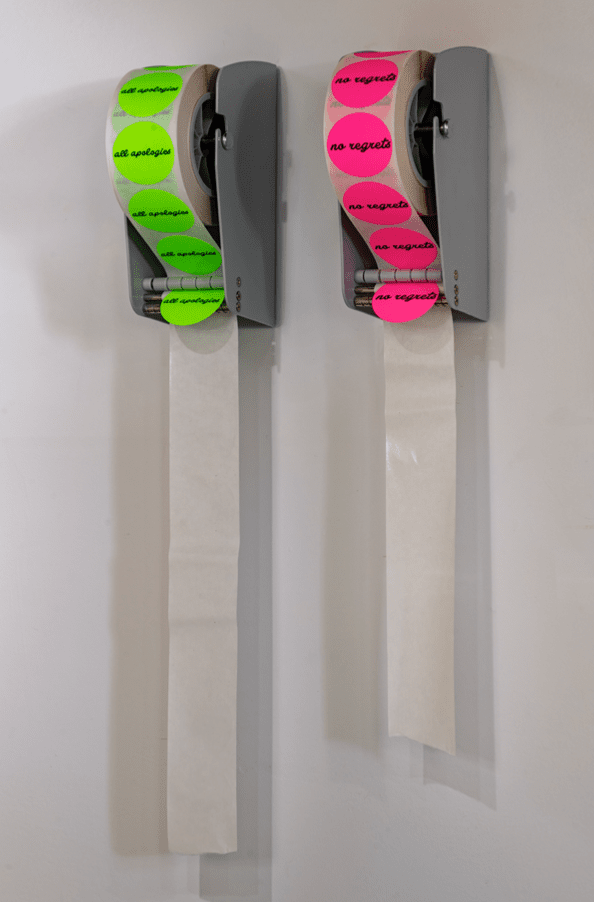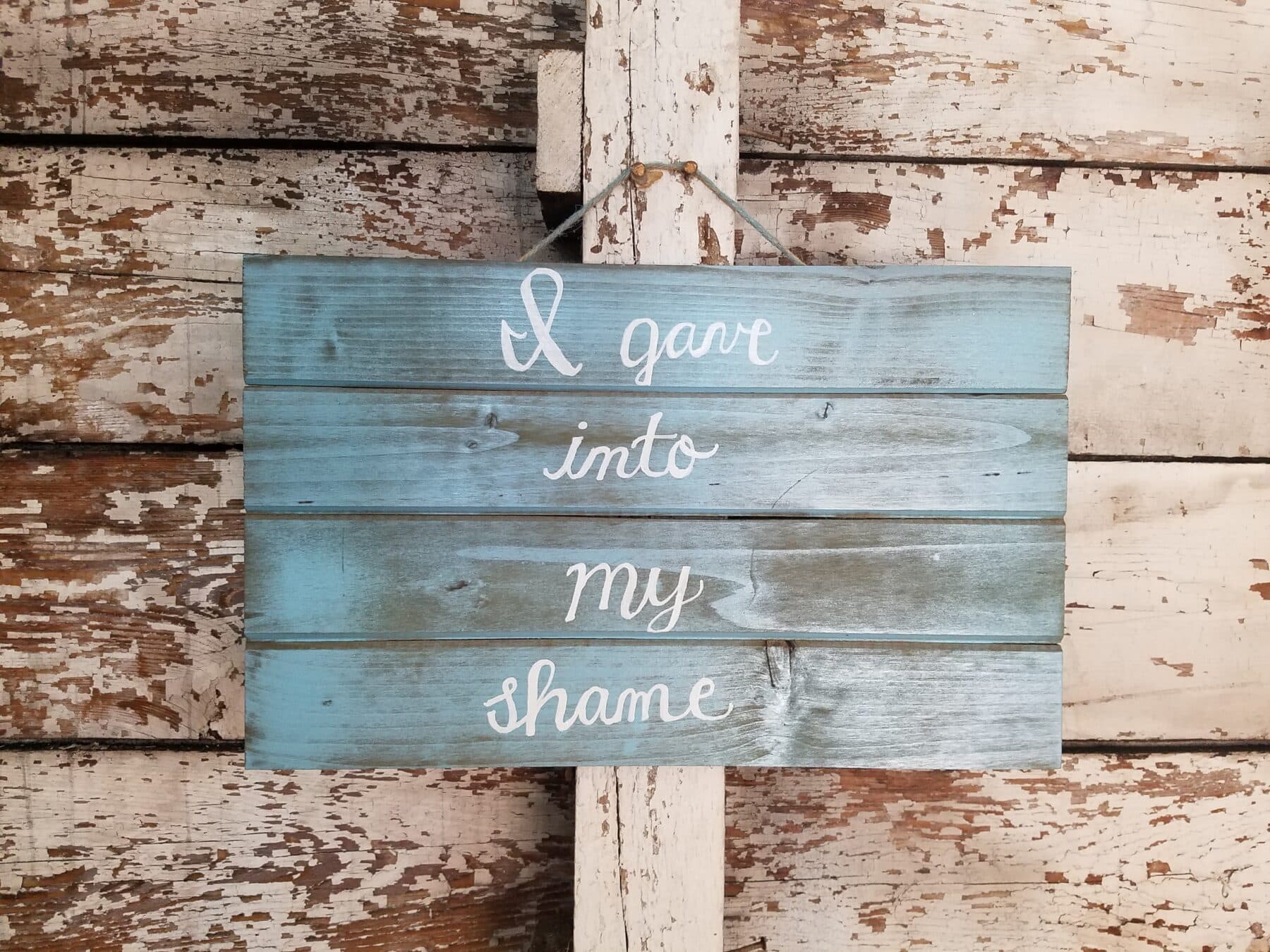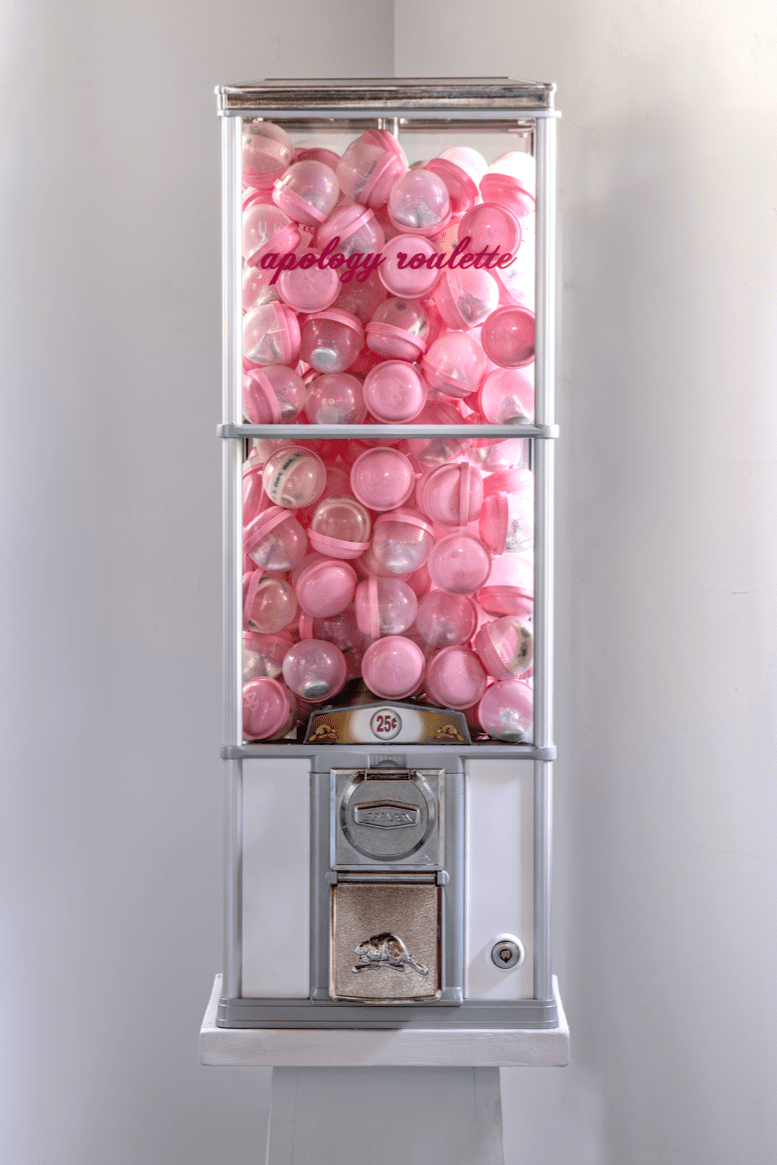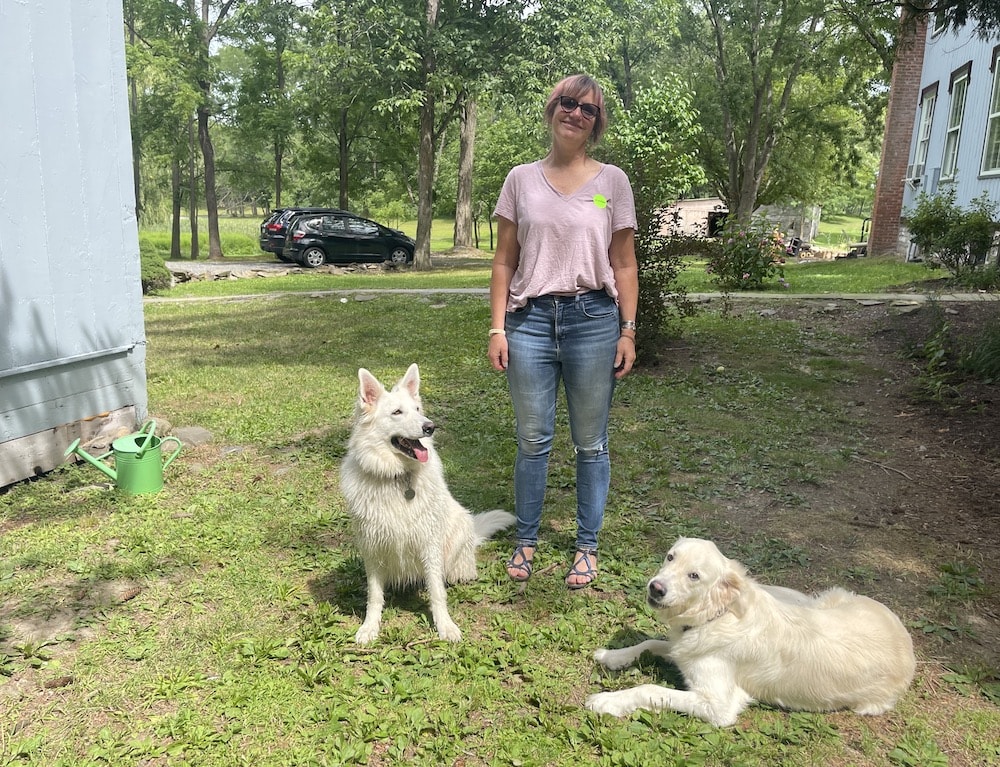SorryWatch recently saw a delightful gallery show called “Mistakes Were Made.” In it, artist Jennifer Dalton explores her interest in the faux-sincerity and sameness of bad public apologies.
The show is at a tiny gallery called Mother-in-Law’s in Germantown, NY. A line of commercially sold apology-themed doormats (“the house was clean yesterday; sorry you missed it!” and “sorry if you trip over my weiner,” with a silhouette of a dachshund) leads to the door of a cabin set up like a Hallmark store. The interior brims with apology-related tchotchkes like “totes sorry” tote bags and “I’m sorry about this mug; it doesn’t fix any real problems” mugs. A millennial pink wall (its own design cliché!) sports multiple signs quoting snippets of real celebrity apologies (including those of Jeffrey Toobin, Bill Clinton, Lance Armstrong, and Kevin Spacey); SorryWatch had (bitter) fun trying to remember who said what.

Which sticker is more YOU?
The signs are rendered in the faux-authentic, not-actually-handcrafted style of wooden home-décor signs often seen in lake houses and beach-town cottages. These plaques spout ubiquitous, cheesy, “live, laugh, love”-style phrases (see also: “but first, coffee,” “this kitchen is for dancing” and “it’s wine o’clock”—all those links lead to TikToks mocking the aesthetic) rendered in fake-intimate swooping “bridesmaid” script and a few equally affected, boxy, faux-industrial fonts.
Why was Dalton interested in (to quote Mother-in-Law’s press release), “the faux artisanal aesthetic of a product that has ‘handmade’ printed on its packaging meets the ersatz sincerity and false warmth of words composed by professional crisis managers”?
Dalton told SorryWatch, “I need to go in towards the thing that bothers me. And this aesthetic has been really bothering me! This rustic wood thing in your airbnb that someone bought at Michael’s feels of a piece with the fake-sentimentality of the horrible, looping wedding font. It’s this sanctioned way for any sentiment to look cute. And I was thinking about why I hated the font so much, and then there was the fakeness and sameness of public apologies. This ‘we need to be authentic and our true self’ thing, but it’s all the same. I’m interested in faux sincerity in both form and content.”

Guess who? It’s Bill Clinton!
In addition to the signs, Dalton installed a giant, working gumball machine filled with dozens of plastic bubbles. Some of the bubbles contain Hershey kisses; some contain rubber bracelets with “it’s not you, it’s me” inscribed on them; others contain rubber bracelets saying “it’s not me, it’s you.” And one bubble contained something else. “I put one heartfelt, handwritten apology from me in there,” she said. “I can’t see it now, but I think I would have heard if someone had gotten it.” One woman fed quarter after quarter into the machine, hoping for a bracelet but getting Kisses.

You pays your money and you takes your chance
SorryWatch purchased several greeting cards depicting the signs in the gallery. Several of the designs were sold out, including “There are actions and behaviors in my past that were hurtful.” (That was Former Virginia governor Ralph Northam apologizing for doing blackface—he survived the scandal, as did Louis CK, also represented in the show; Dalton was once a big Louis CK fan. Like SorryWatch, Dalton observes that “cancellation” tends to be a talking point rather than an actuality when one is a powerful man.)
This project, Dalton notes, is a little different from her usual work. “It’s a little less quasi-scientific,” she said. “I usually go into counting things, statistics.” (One of her past projects was called “What Does an Artist Look Like?” a decade-long experiment in which Dalton took every photograph of every type of artist published in the New Yorker and ranked each photo on a scale of “genius” to “pinup”—“because I feel that’s the axis they fall on: either you’re hunched over a stack of books with a cigarette or you’re tits-up in the bath,” she observed drily. “This drove me up a tree.”)
“People think the show is all about ‘#MeToo,’ but it’s not,” Dalton continued. “There are apologies here for all kinds of offenses.” SorryWatch leaves it to you to discuss why there are so many more terrible public apologies from men.
However, not all the apologies in the show are terrible. Amid all the foulness is a cabinet of glowing glass candles, each printed with a quote from an apology Dalton felt was good. These include “Without qualification or excuse, I apologize for the harm I caused” (Elizabeth Warren, apologizing for having identified as Native American) and “If you lie to yourself, you can lie to everybody” (TV writer/producer Dan Harmon, apologizing for sexually harassing a former employee).
The show closes on August 21, the day after SorryWatch is finally publishing this post (after visiting at the end of July—we’re sorry!). But Dalton is hoping to continue and expand on the project. “I feel this could be the beginning of delving deeper into the way I work statistically,” she said. “I’m going to count up all the cards and see which ones sold the best and see if I can draw conclusions. And ultimately what I’d love to do is categorize the different apologies by the mechanisms behind them— the passive tense, the self-wallowing—and graph them. I’d like to ramp it up and do a visual schematic where you can see the different fake apology strategies.”

Artist with gallery visitors
Image Credits: Photo by Chris Kendall , Chris Kendall, Jen Dalton, Marjorie Ingall

I wish I could see this!
Wondering about this:
Like SorryWatch, Dalton observes that “cancellation” tends not to be a talking point rather than an actuality when one is a powerful man.
Should that be “tends to be a talking point rather than an actuality”?
You are correct, Lisa! Thank you. Fixed.
This is fantastic! Thank you
I am so sorry I missed this exhibition! But glad for this inspiring report. It sounds fantastic.
You are very welcome, snarly!
i love this so much. how did the sorrywatchers find out about it? and yes, the artist’s horror at that wedding font and the faux-artisanal…
Excellent.
On this is such a cool place.
(Apologies if this sent twice.) What a cool-sounding place. I’ve often thought someone ought to collect all of the craft-store home interior apology signs… and burn them…